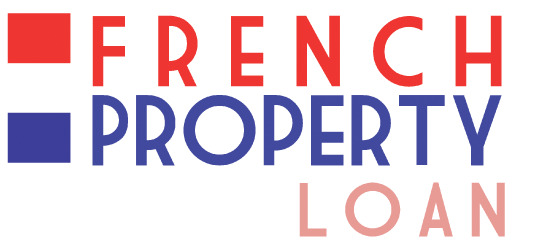La Vie en Viager
Volume VII, Issue 17
The sun is pouring in the windows, the air is cool and the trees and flowers are bursting forth. It’s “April in Paris” and we’re loving it.
Today’s issue focuses on a particular kind of property — a “viager.” A viager is a life annuity property that has benefits for both seller and buyer with a risk for the buyer, but a potentially large gain.
I am personally in the midst of such a transaction, having purchased a viager almost two years ago that has become an ongoing saga — a tale to be told that should soon have a happy ending for both the seller and the buyer…which does not mean death for the seller…but life with more income. Read all about it in today’s issue along with a complete explanation of the ins and outs of viager ownership as well as a variety of viager properties on the market today.
On the subject of Paris property prices, we take an even more in-depth look at the last 17 years of price fluctuations, charted by district for all 17 years. The Chambre de Notaires makes the information available to us, but it’s up to us to review and analyze it. We’ve done some of that for you, so that it will help you determine which areas of the city will make the best property investments.
Make a note that the next airing of the newest House Hunters International is June 15th and don’t miss our upcoming Living and Investing in France Real Estate Conference May 31st in Paris. (See the details for both in today’s issue.)
A bientôt,
Adrian Leeds
 Editor, French Property Insider
Editor, French Property Insider
Email: [email protected]

P.S. Be sure to check out our newest luxury vacation rental apartment in Paris: Le Trésor du Marais — www.adrianleeds.com/parlerparis/apartments/rentals/tresor.html.
Charting the Paris Property Market
By Adrian Leeds
 The Chambre de Notaires closely monitors the property sales, providing the data for our inspection and analysis.
The Chambre de Notaires closely monitors the property sales, providing the data for our inspection and analysis.In the following two charts (downloadable and printable pdf files), the average per square meter prices and the evolution of the prices by district (arrondissement) are charted beginning with second quarter 1991 through fourth quarter 2008.
Download them by clicking on th following two links:
Price per square meter by arrondissement in Paris since 1991: adrianleeds.com/frenchproperty/insider
Evolution of the price per square meter by arrondissement in Paris since 1991: adrianleeds.com/frenchproperty/insider
The following observations can be made:
In terms of evolution, the end of the year 2000 is consider the index for the entire period, therefore the prices per square meter for the fourth quarter 2000 would be considered the index as well.
Since that term, the districts with the most growth were the 10th with 266% followed by the 2nd with 256.9%. The districts with the least growth were the 16th with 189.6% followed by the 6th with 196.9% growth. Sixteen of the 20 districts showed growth of more than 200% since the end of 2000. Over an eight-year period (2000 – 2008), the average growth for all districts was 224.5%, or a little more than 11.2% annually.
The period that experienced the lowest prices was 1998 when prices fell as much as between 25% and 30%. Since
th
en prices have continued to escalate on a regular basis until fourth quarter 2008, when the market took a slight downturn in all but two districts: 9th and 15th.
The district which lost the most value in the fourth quarter of 2008 was the 8th. The district which lost the least value in the fourth quarter of 2008 was the 5th.
The charts should help you determine which areas of the city will make the best property investments. Those that overall show the most growth and lose the least value, would be most favorable for long range investing.
Viager, an Alternative Way to Purchase Property
Compiled and edited by Schuyler Hoffman
 The term “viager” owes its origin to the word viage meaning ‘duration of life’ in old French. The expression indicates the lack of certainty, the unpredictable nature of its length.
The term “viager” owes its origin to the word viage meaning ‘duration of life’ in old French. The expression indicates the lack of certainty, the unpredictable nature of its length. The viager is a particular way of selling possessions or property which relies on converting all or part of the sale price into an annual and viagère rent (a regular annual revenue for life) in favor of the seller. This annual rent is usually paid monthly or quarterly (as agreed between the two parties). It comes into force on the day the notarized act of sale is signed and expires on the death of the seller. It is governed by articles 1968 and 1983 of the Civil Code.
Thus a sale “en viager” allows:
* the seller, known as the Crédirentier, to secure a return on one or several possessions by creating an additional tax efficient pension guaranteed for life.
* the buyer, known as the Débirentier, to build up a trouble free property holding.
There are a couple of variations on a purchase made en viager: Occupied Viager, Viager Vacant and Forward buying.
Occupied Viager
The occupied viager sale is the most common. It allows the owner to sell his/her possession while retaining both customary and dwelling rights during his/her lifetime, and the buyer to benefit from the reduction in sale price corresponding to the value of these customary and dwelling rights.
The first step is to evaluate as accurately as possible the sale price (or occupied value) which equates to the difference between the market value of the possession (freehold value) and the value of the customary and dwelling rights which depend on the life expectancy of the seller or sellers.
The second step is to establish the method of payment of the sale price taking into account the wishes of the parties: – Payment in full on the day the authenticated deed of sale is signe – A down payment (called the bouquet) on the day the said deed is signed with the balance paid as a viagère rent; – Or the entire amount is converted into a viagère rent.
 The viagère rent is calculated using tables based on mortality statistics, which are regularly updated, and on a fixed rate of interest. The said rent terminates on the day of the seller’s death. It should be noted that the viagère rent calculated in the first instance with the objective of meeting the seller’s needs is index linked on an annual basis to maintain the latter’s buying power over the years. It is normal practice to index link the rent to the average retail price index established and published monthly by the INSEE (National Institute of Statistics and Economic Studies).
The viagère rent is calculated using tables based on mortality statistics, which are regularly updated, and on a fixed rate of interest. The said rent terminates on the day of the seller’s death. It should be noted that the viagère rent calculated in the first instance with the objective of meeting the seller’s needs is index linked on an annual basis to maintain the latter’s buying power over the years. It is normal practice to index link the rent to the average retail price index established and published monthly by the INSEE (National Institute of Statistics and Economic Studies).Charges and conditions: Contrary to popular opinion, the charges and conditions relating to the customary and dwelling rights are not governed by law: “the contract makes the law between the parties.” Generally speaking, the seller continues to pay all the running costs (heating, electricity, water, running repairs, general repairs, management company fees…) and the buyer pays for major repairs as per article 606 of the Civil Code, together with the Land Tax on developed property and fire insurance for the building.
Surrender of use: At any time the seller, who reserves the customary and dwelling rights, may release the property to the buyer who then pays in exchange an increased rent or a capital payment calculated according to the value of the recovered usage. It is best to make provisions for the possible vacation of the premises at the time of the act of sale.
Viager Vacant
Similar logic applies to the Vacant, or free, viager, the difference being that, as the name implies, the property is sold with vacant possession so there is no reduction in price linked to occupancy. When an owner possesses a property other than his/her principal residence or has to leave this principal residence, the free viager provides a solution ensuring a fixed, regular income with attractive tax benefits without the inconveniences attached to renting.
Forward buying
This type of sale, often used by young buyers, is a kind of “Seller credit.” As with the viager, the seller may occupy the property for life for a period determined in advance or vacate it on the day the act of sale is signed. The occupancy price reduction depends on the period chosen at the outset or on the life expectancy of the Seller/s if occupancy is for life.
The “occupied price” is then broken down into an initial payment due on the day the authenticated deed of sale is signed and monthly payments ending on a fixed date.
Differences versus the viager:
* The mon
thly payments are tax free
* They continue until the expiry date even in the event of the seller’s death (to the account of the beneficiaries)
* They are index linked, in general, to the cost of construction
 As with the viager, if the seller retains customary and dwelling rights, it is advisable to make provision in the authenticated deed of sale for a detailed breakdown of costs and works, and for the possible relinquishment by the seller of these customary and dwelling rights to the benefit of the buyer in exchange for financial compensation.
As with the viager, if the seller retains customary and dwelling rights, it is advisable to make provision in the authenticated deed of sale for a detailed breakdown of costs and works, and for the possible relinquishment by the seller of these customary and dwelling rights to the benefit of the buyer in exchange for financial compensation.Tax Implications of a Viager
In addition to purchasing a property at below market value, a viager can also offer tax benefits.
Viagères rents benefit from advantageous tax reductions:
* 30% up to 50 years of age – 50% between 50 and 59
* 60% between 60 and 69
* 70% from 70 on
The reversionary rent is free of inheritance tax on the death of the first partner (article 793-1-5 of the CGI).
The French Inland Revenue applies this scale based on the age of the older seller. The age is calculated on the day the original deed of sale is signed and the tax reduction remains the same for life (if a seller is 69 years old the day of the sale, he will benefit from a reduction of 60% for life whereas if he waited until he was 70, he would have 70%).
The viager, mainly occupied (only 10% of transactions are en viager libre), is a useful solution to several current concerns such as:
* retirement (for the Seller who benefits immediately as well as for the Buyer who is planning his)
* housing (possibility for the Buyer to obtain a city centre property, for example, where building programs are rare and prices out of reach)
* financial investments which can often be uncertain
inheritance concerns (second families, for example, or where there are underlying problems between children)
* heavy taxes payable to the State when there are no direct heirs…and others, depending on individual cases.
As with any property transaction you should contact a legal professional to ensure you have receive correct information and proper guidance. There are those who specialize in viagers. Most important, you need a professional to draw up an appropriate sales contract. Doing this will help ensure your purchase en viager will be trouble free.
Editor’s Note: The photos used for this article are properties on the market to be sold as viagers.
To read more, click the links below.






